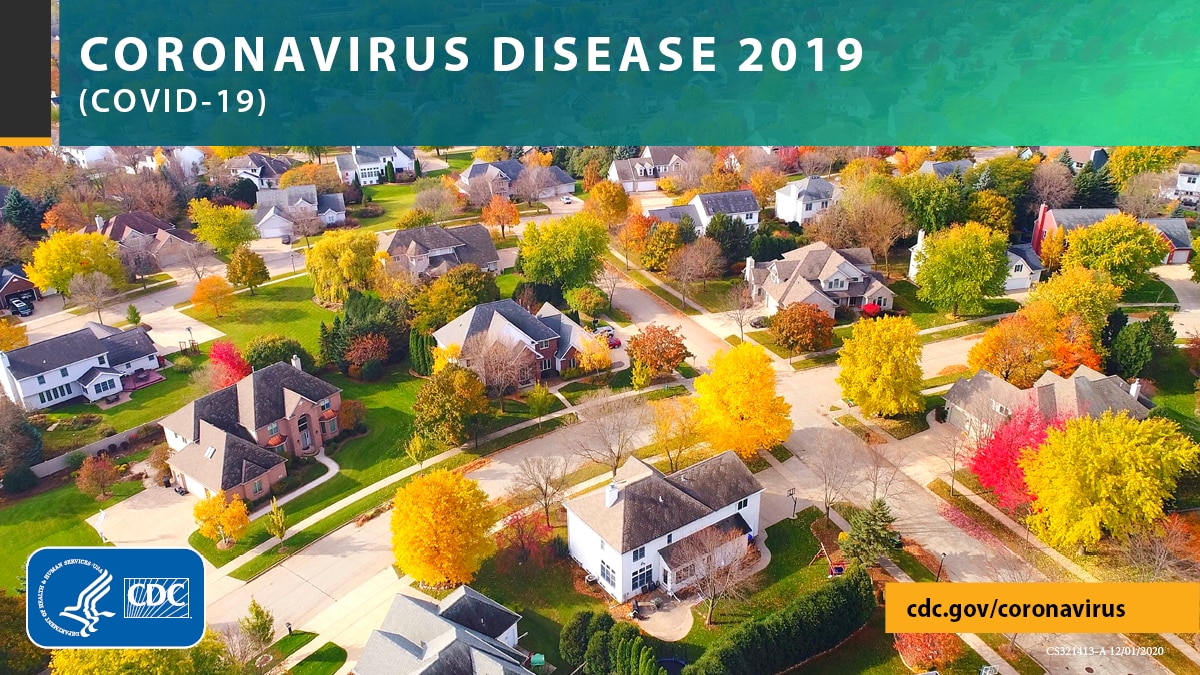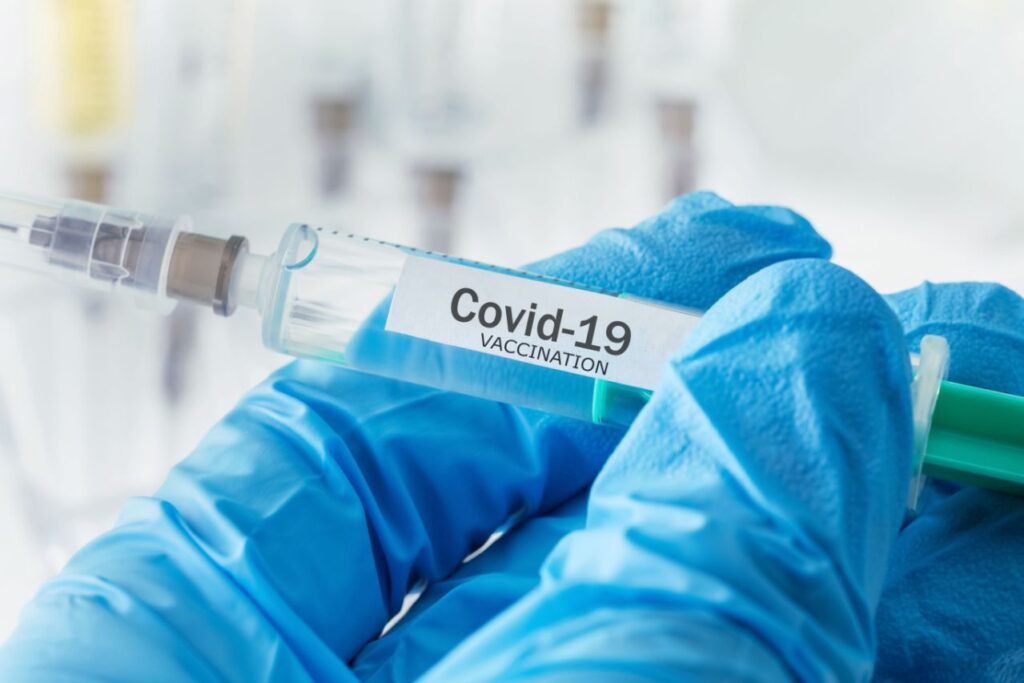Interim Considerations for SARS-CoV-2 Testing in Correctional and Detention Facilities
Written by COVID-19 NEWS on March 16, 2021

Screening testing
Testing asymptomatic persons without known or suspected exposure to SARS-CoV-2
Viral testing of asymptomatic staff or incarcerated/detained persons without known or suspected exposure to SARS-CoV-2 – known as screening testing – in correctional and detention facilities can detect COVID-19 early and stop transmission quickly, particularly in areas with moderate to high community transmission of COVID-19. Screening testing is a key component of a layered approach to prevent SARS-CoV-2 transmission. Screening testing allows early identification and isolation of persons who are asymptomatic or presymptomatic, or have only mild symptoms and who may be unknowingly transmitting virus. For screening testing in correctional facilities, either NAATs or antigen tests (or both) could be used. Important attributes to consider when selecting the type of test or tests used for screening include availability, costs, and turnaround time. In screening where antigen tests are used, a laboratory-based confirmatory NAAT testing is recommended for individuals who test positive.
Screening testing for staff should be considered in all facilities. This should include:
- Testing of all staff before entering the facility every 3–7 days, and
- Targeted testing of new staff, those returning from a prolonged absence, travel, or other concerns related to exposure. In some facilities, COVID-19 cases have been initially identified among staff before any cases have been identified among incarcerated/detained persons. If there are barriers to staff testing, facilities can investigate options to work with community partners (e.g. local hospitals or clinics) or state/local health departments to implement staff testing.
Screening testing for incarcerated/detained persons should be implemented and can include the following strategies, listed in order of priority for implementation and described in sections below:
- Screening testing based on movement between facilities and between the facility and the community.
- Expanded screening testing of all persons in a housing unit, building, or facility regardless of symptoms.
- Serial screening testing of all (or a random sample of) incarcerated/detained persons.
Use of point-of-care (POC) tests, such as antigen tests, can play an important role in testing as a mitigation strategy due to the short turn-around time for results. Antigen tests for SARS-CoV-2 are generally less sensitive than real-time reverse transcription polymerase chain reaction (RT-PCR) and other nucleic acid amplification tests (NAATs) for detecting the presence of viral nucleic acid. The decreased sensitivity of antigen tests might be offset if the point-of-care antigen tests are repeated more frequently (i.e., serial testing). Thus, when screening large numbers of persons (e.g., a well-defined cohort) without known or suspected exposure to SARS-CoV-2, a less sensitive test can be appropriate if the test can be performed more frequently and provide rapid results with immediate isolation of infected individuals.
Screening testing based on movement between facilities and between the facility and the community
When implementing screening testing, facilities should prioritize testing to prevent the introduction of the virus into the facility and to prevent transmission to another facility or into the community. Screening testing should include testing for incarcerated/detained persons in the following scenarios.
- At intake. Test all incoming incarcerated/detained persons and house them individually (when feasible) while waiting for test results. Testing can be combined with a 14-day observation period (sometimes referred to as “routine intake quarantine”), ideally in single cells, before persons are assigned housing with the rest of the facility’s population. This practice can reduce the risk of transmission from sources outside the facility.
- Before transfer to another facility or reassignment in the facility. Test all incarcerated/detained persons before transfer to another correctional/detention facility. Wait for a negative result before transfer. Testing before transfer can be combined with a 14-day observation period (sometimes referred to as “routine transfer quarantine”), ideally in single cells, before an individual’s projected transfer date. If testing and transfer quarantine cannot be performed for security or logistical reasons, then intake quarantine may occur in the receiving facility for 14 days upon arrival. Refer to Interim Guidance on Management of Coronavirus Disease 2019 (COVID-19) in Correctional and Detention Facilities for more information about transfer and release recommendations.
- Before visits or release into the community. Test all persons 1–3 days before visits (e.g. clinics, court appearances, community programs) or release (whether into the community or to a halfway house or other transitional location), particularly if it is known that they will be releasing to other congregate settings (e.g., homeless shelters, group homes, or halfway houses) or to households with persons who are at higher risk of severe illness from COVID-19. Community members that visit the facility, including medical providers, should also be tested as close to the day of the visit (no more than 3 days prior). Testing before release can be combined with a 14-day observation period (sometimes referred to as “routine release quarantine”), ideally in single cells, before a person’s release date. This practice can reduce the risk of transmission from the facility to the community and allows the opportunity for the facility to notify public health authorities for assistance arranging recommended medical isolation upon release for people who test positive.
Expanded screening testing
In correctional and detention facilities, where physical distancing is often impracticable, it can be difficult to determine who has been in close contact with someone with COVID-19. For these situations, options for expanded screening testing are recommended. Expanded screening testing is not intended to replace case investigation or response-based testing.
- Expanded screening testing should be considered following a positive test from diagnostic or screening testing when targeted testing of close contacts based on contact tracing is not practicable (e.g., in large dormitory units). If someone tests positive at intake but has not had close contact with other members of the facility’s population and is immediately placed in medical isolation, this person’s positive test result would not trigger expanded screening testing.
- The scope of expanded screening testing should be based on the extent of movement (of staff and incarcerated/detained persons) between parts of the facility with and without cases. Examples of expanded screening testing strategies include:
- Testing all persons in a single housing unit where someone has tested positive if there has not been contact with other areas of the facility through staff or incarcerated/detained persons.
- Testing all persons in an entire building or complex when cases have been identified in multiple parts of the building or complex, or if there has been contact between parts of the building or complex with and without cases. This can happen in situations such as when staff work in multiple units, or through incarcerated/detained persons who have moved through multiple areas of the facility during work detail.
- Facility administrators should strongly consider including staff in expanded screening testing efforts. In some facilities, COVID-19 cases have been initially identified among staff before any cases have been identified among incarcerated/detained persons. Because staff move between the facility and the community daily, the risks of introducing infection into the facility from the community and/or bringing infection from the facility back into the community is ongoing. If there are operational, contractual, and/or legal reasons to refrain from testing staff within the facility or concerns about using facility resources/personnel to test staff, facilities should investigate options to work with community partners or state/local health departments to implement staff testing.
Before conducting expanded screening testing, facilities should make plans for how they will modify their operations based on results and ability to act on those results.
- Given the potential for high numbers of asymptomatic infections, ensure that plans include isolation options to house large numbers of infected persons and quarantine options to house large numbers of close contacts. For example, consider how the facility’s housing operations could be modified for multiple test result scenarios (e.g., if testing reveals that 10%, 30%, 50%, or more of a facility’s population is infected with SARS-CoV-2).
Review CDC guidance on Performing Broad-Based Testing for SARS-CoV-2 in Congregate Settings for information on choosing a physical location for testing, ensuring adequate ventilation, planning movement through the testing location, and providing recommended PPE.
Serial screening testing for all or a random sample of incarcerated/detained persons
Facilities should consider implementing serial screening testing among additional incarcerated/detained persons and staff, or among a select group according to criteria it designates. Given the incubation period for COVID-19 (up to 14 days), CDC recommends conducting screening testing every 3-7 days. Screening testing can increase the likelihood of early case identification to prevent widespread transmission. Two strategies for serial screening testing include serial screening testing every 3-7 days for all (or a random selection of) individuals in a facility, or targeted screening testing based on facility- or individual-level factors. The testing interval should be based on the stage of an ongoing outbreak (more frequent testing in the context of an escalating outbreak; less frequent when transmission has slowed) and on the type of test (more frequent for antigen tests).
- Serial screening testing can be conducted among all incarcerated/detained persons and among all staff, or by randomly selecting individuals for testing. Facilities using random selection should plan to test at least 25% of incarcerated/detained persons and staff every 3-7 days.
- Targeted serial screening testing based on facility-level factors. Within a single facility, an expanded ongoing testing strategy could be designed in several ways.
- Testing based on risk. A facility could target certain parts of the facility for serial screening testing based on risk of transmission in the settings. Examples of risk-based testing priorities could include incarcerated/detained people and staff assigned to dorm-based housing units (as opposed to cell-based units).
- History of cases in the facility. Consider prioritizing expanded testing in facilities that have had recent cases or outbreaks of COVID-19.
- Type of housing in the facility. Consider prioritizing expanded testing in facilities with dormitory-based housing units where physical/social distancing is especially difficult.
- In-person visiting. Consider prioritizing expanded testing in facilities where in-person visitation is occurring.
- Community movement. Consider prioritizing expanded testing in facilities where incarcerated/detained people make more visits into the community (e.g., off-site medical visits, work release, or court appearances), especially in areas where there are higher levels of community transmission of SARS-CoV-2.
- Turnover within the facility. Consider prioritizing expanded testing in facilities that have frequent admissions (newly incarcerated/detained persons or those transferring in from other facilities).
- Staff interactions. Consider prioritizing expanded testing in facilities employing staff who work in multiple correctional/detention facilities or in other congregate settings (e.g., homeless shelters, group homes, or schools), or employing staff who are in frequent close contact (e.g., family or household members, carpools) with others who work in different parts of the facility or in other congregate settings.
- Populations at higher risk of severe illness from COVID-19. Consider prioritizing expanded testing in facilities with a high proportion of people who are at higher risk for severe illness from COVID-19 (e.g., facilities designated for medical care such as medical facilities, long-term care facilities, or skilled nursing facilities).
- Targeted serial screening testing based on person-level factors. Across facilities, there may be certain groups of people who are at higher risk of SARS-CoV-2 infection or at higher risk for severe illness from COVID-19, regardless of the particular facility where they live or work. Some of these person-level factors should be considered when prioritizing categories of people for serial screening testing.
- Incarcerated/detained persons and staff who are medically high-risk. Consider serial screening testing for people who are at higher risk of severe illness from COVID-19, including those with medical conditions that increase or may increase risk of severe COVID-19. Identifying infections early can help ensure timely medical attention to prevent severe outcomes.
- Incarcerated/detained person assigned to on-site work details. Consider serial screening testing for people who are assigned to critical work duties within the facility (e.g., food service or laundry) that require them to leave their housing unit.
- Incarcerated/detained persons participating in work release programs. Consider serial screening testing for people who participate in community-based work release programs.
- Staff working in a facility designated for medical care. Consider serial screening testing for staff who must continue to work in a correctional/detention facility designated for medical care (e.g., medical facility, long-term care facility, or skilled nursing facility).
- Staff working in multiple areas of the facility. Consider serial screening testing for staff who work in multiple areas of the facility, or who live or spend time with other staff who work in other areas of the facility (e.g., family or household members, carpools).
- Staff working in multiple congregate facilities. Consider serial screening testing for staff who work in more than one correctional/detention facility or in another congregate setting (e.g., homeless shelters, group homes, or schools), or those who have frequent close contact (e.g., family or household members, carpools) with others who work in different parts of the facility or in other congregate settings.
Frequency of screening testing
Screening testing approaches may include initial testing described in the screening testing for staff and serial screening testing for incarcerated/detained persons sections above. Facility administrators may find the following factors helpful to consider when determining the interval for periodic testing:
- The availability of testing, turnaround time, and cost
- The latency time period between exposure and development of a positive SARS-CoV-2 viral test
- How many staff or incarcerated/detained persons tested positive during previous rounds of testing
- Relevant experience with outbreaks at the facility
Testing any less frequently than once a week is unlikely to be effective in identifying recently infected asymptomatic persons who need to be isolated. Additionally, outbreak control depends largely on the frequency of testing and the speed of returning results for rapid medical isolation.





